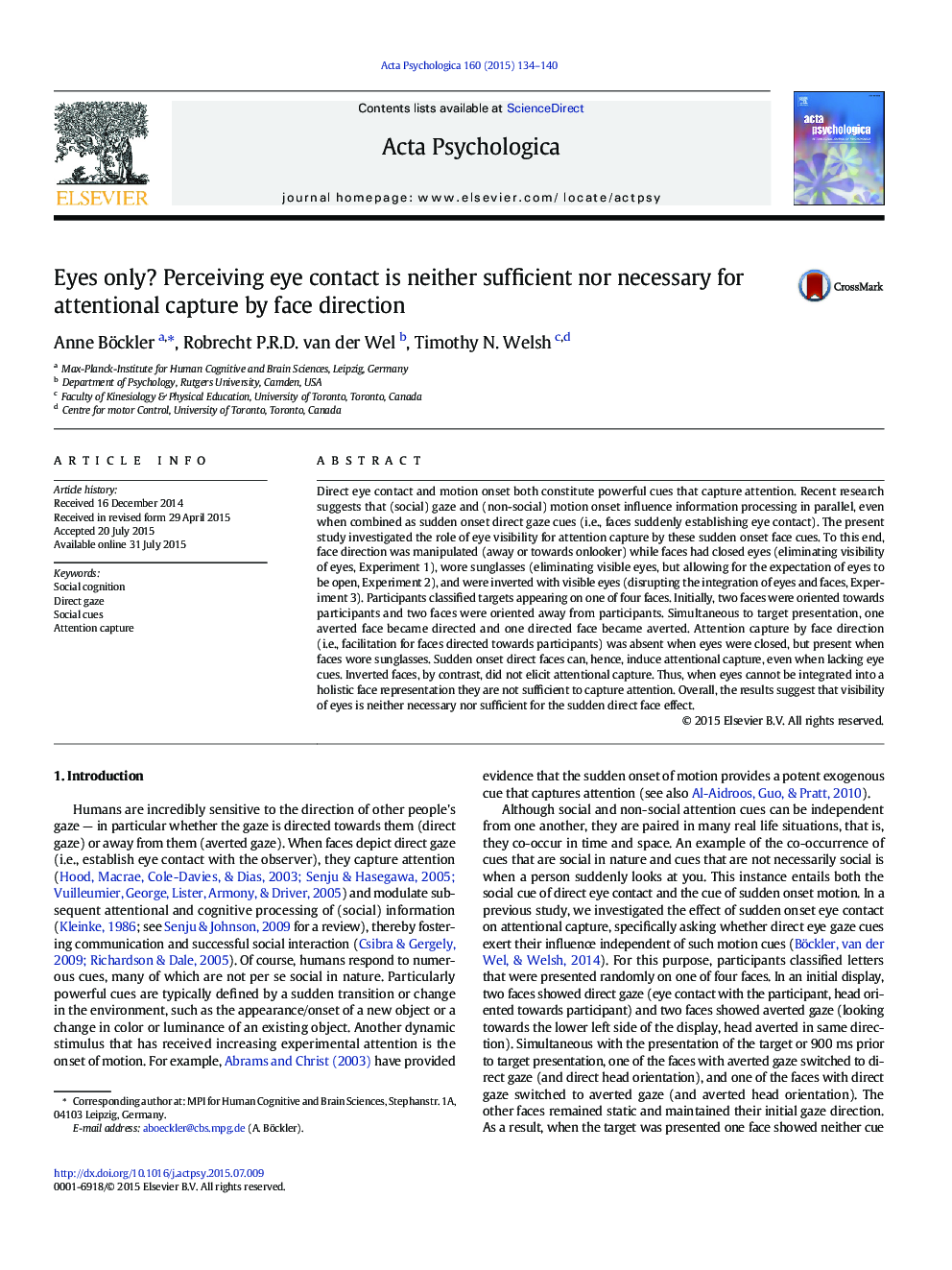| Article ID | Journal | Published Year | Pages | File Type |
|---|---|---|---|---|
| 919688 | Acta Psychologica | 2015 | 7 Pages |
•Faces (suddenly) directed towards observers don't capture attention when eyes are closed.•Faces (suddenly) directed towards observers capture attention when faces wear sunglasses.•Direct gaze does not capture attention when faces are inverted (no holistic integration).•Eye visibility is neither necessary nor sufficient for attention capture by face cues.
Direct eye contact and motion onset both constitute powerful cues that capture attention. Recent research suggests that (social) gaze and (non-social) motion onset influence information processing in parallel, even when combined as sudden onset direct gaze cues (i.e., faces suddenly establishing eye contact). The present study investigated the role of eye visibility for attention capture by these sudden onset face cues. To this end, face direction was manipulated (away or towards onlooker) while faces had closed eyes (eliminating visibility of eyes, Experiment 1), wore sunglasses (eliminating visible eyes, but allowing for the expectation of eyes to be open, Experiment 2), and were inverted with visible eyes (disrupting the integration of eyes and faces, Experiment 3). Participants classified targets appearing on one of four faces. Initially, two faces were oriented towards participants and two faces were oriented away from participants. Simultaneous to target presentation, one averted face became directed and one directed face became averted. Attention capture by face direction (i.e., facilitation for faces directed towards participants) was absent when eyes were closed, but present when faces wore sunglasses. Sudden onset direct faces can, hence, induce attentional capture, even when lacking eye cues. Inverted faces, by contrast, did not elicit attentional capture. Thus, when eyes cannot be integrated into a holistic face representation they are not sufficient to capture attention. Overall, the results suggest that visibility of eyes is neither necessary nor sufficient for the sudden direct face effect.
